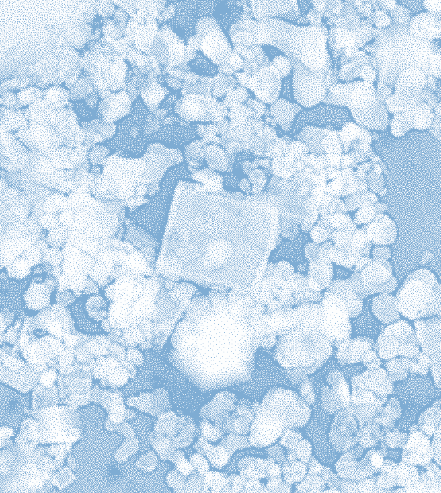Metal interactions monitored
 Researchers are investigating how different metals arrange themselves on the nanoscale.
Researchers are investigating how different metals arrange themselves on the nanoscale.
Australian, NZ and US researchers are reporting new findings into how some frozen liquid metals interact with each other on the smallest of scales.
They found silver and gallium divided - and came back together again - in regular intervals at a nanoscale level, revealing “elegant patterns” when the metallic mixtures solidified. Researchers say that by understanding the way specific atoms interact with each other, they can persuade them to behave in useful ways under different conditions.
The team dissolved a small amount of metals such as silver (Ag) in low-melting-point solvent metals such as gallium (Ga), and investigated how the metallic components interact and separate to form patterns when the metallic liquid mixtures (alloys) solidify.
The researchers found that a single silver–gallium system can produce distinct patterns such as particles or bundle-like structures of a Ag2Ga compound.
Pattern formation is a fundamental yet ubiquitous phenomenon which has interested and inspired scientists for a long time. Some pattern types are more common than others.
Among all the diverse patterning behaviours, divergent pattern formation, or bifurcation, is frequently seen in nature because this particular arrangement generally favours energy conversion or distribution, it is the ‘easiest’ path to follow.
River networks, tree branches, lightning pathways, and vascular systems are all examples of bifurcation.
In comparison, convergent pattern growth, or inverse bifurcation, is encountered less frequently as it is contrary to the energetically favourable bifurcation.
The strange cyclic divergent and convergent growth, called oscillatory bifurcation, is rare and has not been observed in solidification structures prior to the new published work.
Despite this, the researchers observed oscillatory bifurcation patterns on the surface of several liquid alloys after solidification, which suggests that this counter-intuitive behaviour is quite general for solidification patterns forming on the surface of liquid metals.
"The big scientific goal, that this is an example of, is the idea that by understanding the way specific atoms interact with each other, under different conditions (concentrations, temperatures), we can persuade them to behave in useful ways,” says Dr Nicola Gaston, Associate Professor, Department of Physics, University of Auckland and Co-Director of the MacDiarmid Institute for Advanced Materials and Nanotechnology.
“This means that we can get structures (or patterns) to form simply by changing the temperature and ensuring there is a given ratio of two kind of metal atom (as in this example) and that alone will enable a particular structure to form at the nanoscale.
“I emphasise the scale because when structures are this small, creating them through more traditional means (think of cutting away material to make smaller objects) gets really hard, or even impossible.
“But if we can persuade individual atoms to behave the way we want them to, to self-assemble by design, then we have access suddenly to a much wider range of nanomaterials.”







 Print
Print